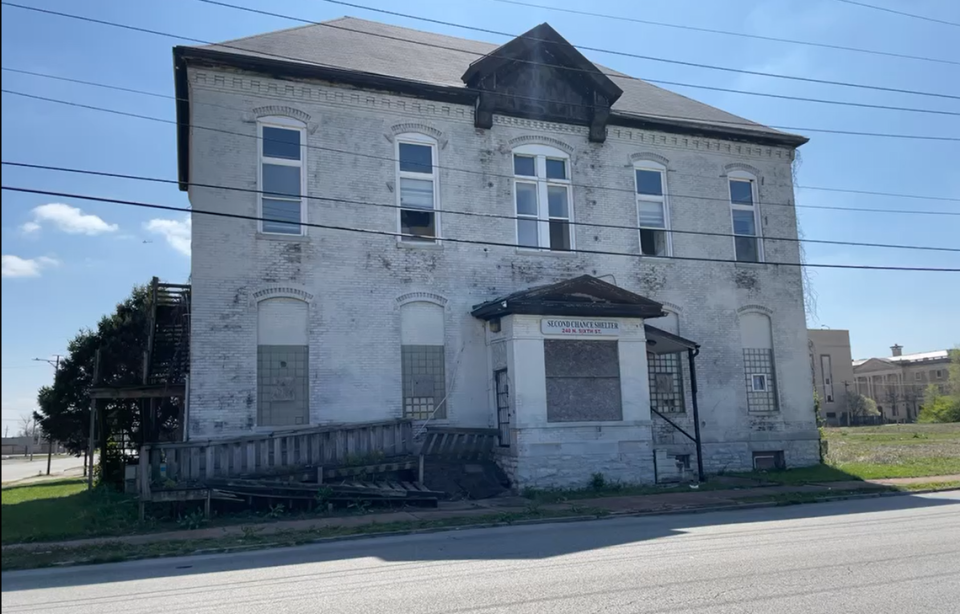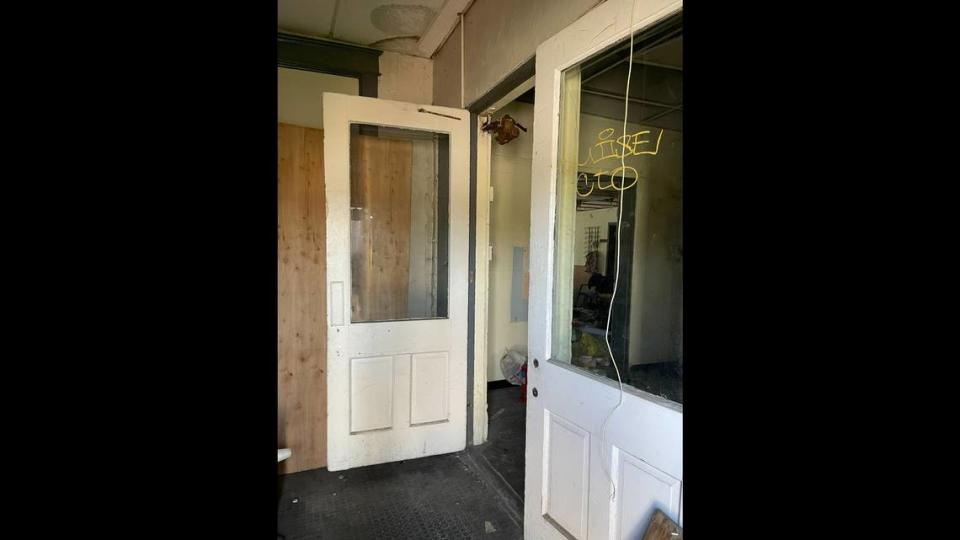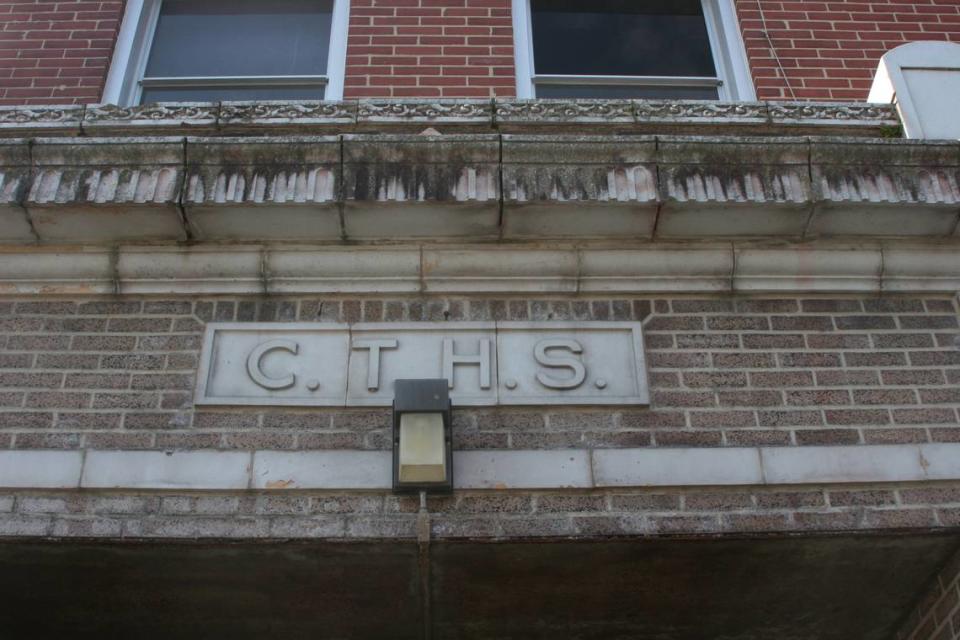Two metro-east spots among 10 ‘most endangered’ historic sites in Illinois in 2024
A historic school for Black students in East St. Louis and a former Collinsville school building, which has seen its redevelopment plans stall, have been named among the most threatened historic sites in the state.
Landmarks Illinois, a historic preservation nonprofit, released its “2024 Most Endangered Historic Places in Illinois” Wednesday, including sites in Madison and St. Clair counties. The former Collinsville Township High School and the former Lincoln School in East St. Louis appeared on the list.
“This year’s ‘Most Endangered’ sites are not only incredibly important places in their communities, but many are large-scale buildings that sit prominently in highly visible areas near city centers, in historic districts or on state-owned land. Their neglect is seen and felt,” Bonnie McDonald, president & CEO of Landmarks Illinois, said in part in a May 7 release. “Despite their current condition, these places tell important stories from our past — stories that should not be erased due to insufficient investment or general disregard for our collective histories.”
Landmarks Illinois has announced the 2024 Most Endangered Historic Places in Illinois. The list calls attention to culturally and architecturally significant sites across the state that face growing threats of disinvestment and demolition.
Learn more: https://t.co/5PALTfJowh pic.twitter.com/1TV3TKKlBK— Landmarks Illinois (@landmarksill) May 7, 2024
Each year, the organization opens the process for nominations, ultimately selecting a handful of sites or structures that hold community significance, are in urgent need of attention and for which there are “potential solutions” for saving them, Quinn Adamowski, regional advocacy manager with Landmarks Illinois, told the BND.
“What we’re looking for is to make sure that there’s strong local interest and support at a local level, that the community really truly values the building for historic purposes, cultural reasons,” he said.
Both the Lincoln School and the former Collinsville Township High School meet that bill, he said, and were nominated in past years before making the 2024 endangered list.
2024 Metro-east endangered historic sites
The Lincoln School, located at 240 N. 6th St. in East St. Louis, was built in 1886 specifically for area Black students to attend. According to county tax records, it is a tax-exempt property owned by Ministers United Against Human Suffering, a not-for-profit corporation with a Swansea mailing address.
The school was constructed following community pressure to further education for Black students, led by John Robinson, a formerly enslaved American Civil War veteran, Landmarks Illinois reports. The structure was used for educational purposes until 1975 and eventually purchased by the not-for-profit in 1999.

Adamowski said while the building has been vacant for sometime, Landmarks believes it is structurally sound and there is a “groundswell of support” to find new purpose for the school building.
In its highlight of the Lincoln School, Landmark Illinois writes the building presents an opportunity for civic and community use.
“With East St. Louis’ downtown historic district a block away, the former Lincoln School stands as a prime location for use as a museum and heritage site to tell stories from the past, like that of John Robinson and residents’ involvement in the 1917 race riots,” the profile reads.

Among the stakeholders looking to preserve the area’s first school for Black students are the Emma L. Wilson King Foundation and the East St. Louis Historical Society.
The old Collinsville Township High School building, at 1203 Vandalia St., also made this year’s most endangered list. The structure, originally constructed in 1908, has seen several renovations over the decades and was used as a vocational center until 1982, Landmarks Illinois reports.
The current owner, Celadon-Collinsville GP LLC, has proposed a redevelopment of the property into affordable housing, Landmarks reports.

“Despite the owner’s adaptive reuse plan, local government officials are opposed to developing affordable housing in this area of Collinsville and will not approve the plan,” Landmarks Illinois wrote in its profile of the site. “It therefore continues to sit vacant and deteriorating in the middle of town as no other feasible reuse options have materialized.”
Adamowski said the building, located in a residential area, is a prime site for the redevelopment, but the project needs government buy in to move forward.
“It’s not a matter of lack of resources, which oftentimes is the case with so many properties, it’s a difference of opinion, I guess, or a lack of understanding of affordable housing,” he said.
Other endangered historic sites in Illinois
Landmarks included one southwest Illinois site on its 2023 list of endangered places, the town of Brooklyn.
“Brooklyn, Illinois, is the oldest – and one of the last remaining – majority-Black incorporated towns in the country. It is threatened by a declining population, high unemployment rate and limited economy,” the organization said in its 2023 press release.
Brooklyn officials and volunteers are taking part in a community mapping project this year, Adamowski said, and several other prior endangered historic sites have seen revitalization efforts since they were featured on the list. Those include Hotel Belleville, which appeared on the list in 2014 and has been redeveloped into affordable apartments.
As for the other historic sites being highlighted this year, they include:
Bishop Hill Colony Church, a circa 1848 building erected by Swedish immigrants, located in Henry County. It is also a state historic site.
Buel House State Historic Site in Pope County includes the 1840 Alexander Buel House.
Shawneetown Bank State Historic Site in Gallatin County, known as the oldest bank building in Illinois, makes a repeat appearance on the most endangered list.
Libby, McNeill and Libby Building, in Cook County, once served as a canning and bottling facility and a top canned food producer. It closed in 1968.
Portage Theater in Cook County “has been an important cultural institution for the local community,” Landmarks Illinois writes, but it closed in 2018.
Sears Administration Building is the former headquarters of retail giant Sears, Roebuck and Co. This Chicago landmark was constructed between 1905 and 1919, but has been empty and on the market for some time.
Decatur Masonic Temple, located in Macon County, has served as a community site since its 1929 construction.
Johnson County Courthouse served as the oldest continually operating courthouse in the state before its closure last year, Landmarks Illinois writes. The building has been vacant since late last year and has suffered roof damage.
Do you have a question about history in the metro-east for our service journalism team? We’d like to hear from you. Fill out our Metro-east Matters form below.

